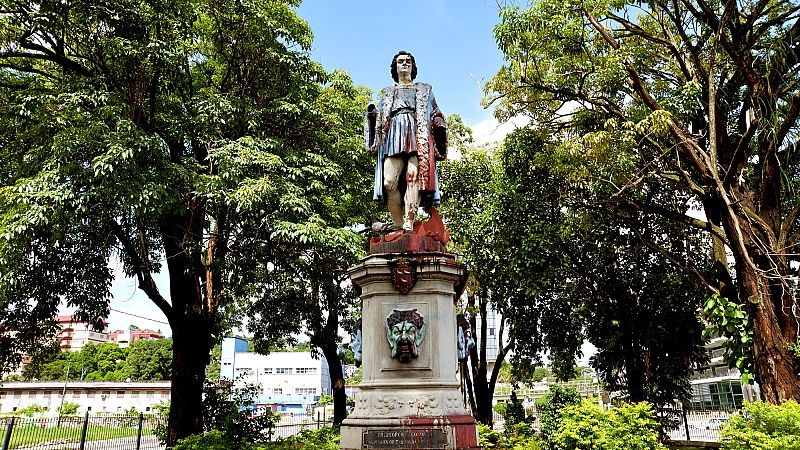Trinidad and Tobago removes Christopher Columbus statue amid reckoning with colonial past

The statue of Christopher Columbus, a controversial fixture in Trinidad and Tobago’s capital for over a century, was finally removed on Wednesday as the Caribbean nation continues to confront its colonial legacy. The decision follows years of activism from citizens and historians who argue that such monuments glorify oppression rather than heritage.
The statue, located in a public area of Port of Spain, had been repeatedly vandalized by protesters who saw it as a symbol of colonial violence.
At the time of its removal, its head was covered with a decorative bag—an anonymous act of defiance.
This move aligns with a broader push across Trinidad and Tobago to reassess historical symbols tied to European colonization.
Last year, officials announced plans to redesign the country’s coat of arms, removing colonial-era imagery for the first time since independence in 1962.
"Global laughingstock": activist celebrates the decision
Shabaka Kambon, director of the Caribbean Freedom Project, has long advocated for the removal of colonial monuments.
In a statement, he criticized the irony of seeking reparations for colonial crimes while still honoring figures like Columbus.
"This monument turned us into a global laughingstock," Kambon said. "People often refer to the natives as the children of the human family. The fact that we struggled for so long to grasp our violent colonial history and lacked the bravery to face it made us appear foolish—especially while demanding reparations from the same powers we were memorializing."
From Columbus’s ships to steelpan: redefining national symbols
The changes extend beyond statues.
Columbus’s famed ships—the Pinta, the Niña, and the Santa María—still adorn some government buildings, but officials plan to replace them with the steelpan, a musical instrument born in Trinidad and Tobago and cherished as a symbol of Caribbean culture.
These shifts reflect a growing movement to decolonize public spaces and celebrate indigenous and Afro-Caribbean heritage instead of European conquest.
A global movement against colonial monuments
Trinidad and Tobago’s decision is part of a worldwide reckoning with colonial history.
In recent years, statues of Columbus have been toppled, vandalized, or removed in the United States, Latin America, and beyond.
Critics argue that these monuments whitewash the brutality of colonization, including slavery, genocide, and cultural erasure.
Columbus first arrived in Trinidad and Tobago in 1498, marking the beginning of centuries of European domination in the region.
For many, his removal from public spaces is a symbolic step toward justice.
With the statue gone and national symbols being reimagined, Trinidad and Tobago continues its journey toward reclaiming its history.
While some may oppose these changes, activists argue that true independence requires confronting—not glorifying—the past.
As Kambon put it, "We can’t seek reparations for colonial crimes while still honoring the criminals."
The removal of Columbus’s statue is not just about taking down a monument—it’s about rewriting a narrative.
Today

